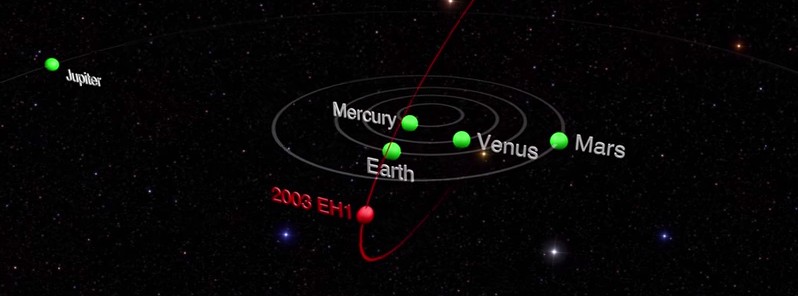Quadrantids, known for spectacular fireballs, peak on January 3

The Quadrantid meteor shower, one of the best annual meteor showers and well known for producing spectacular fireballs, will peak around 14:00 UTC on January 3, 2016. The Moon will be 6 days old at the time of peak activity, presenting minimal interference.
This is an above average meteor shower with up to 60 – 200 meteors per hour at its peak. However, big hourly rates assume a perfectly dark sky and that the radiant of the meteor shower is directly overhead, among other things. In practice, the number of meteors you are likely to see is lower than 80.
Unlike most meteor showers which originate from comets, the Quadrantids originate from an asteroid: asteroid 2003 EH1. It takes 5.52 years for this asteroid to orbit the Sun once. It is possible that 2003 EH is a "dead comet" or a new kind of object being discussed by astronomers called a "rock comet."
2003 EH1 was discovered on March 6, 2003 by the Lowell Observatory Near-Earth Object Search (LONEOS). This is a small asteroid with a diameter of only about 3 km (1.8 miles). It was astronomer and research scientist Peter Jenniskens who realized that 2003 EH1 is the source for the Quadrantid meteors.
This year, the timing favors western parts of North America and islands across the Pacific. The peak of Quadrantids is brief, typically lasting no more than an hour or so, and it does not always occur at the forecasted time.
The radiant, the point in the sky from which the Quadrantids appear to come from is an obsolete constellation called "Quadrans Muralis," is at around right ascension 15h30m, declination +50° and all of the meteors will appear to be traveling directly outward from this point.
The Moon will be 6 days old at the time of peak activity, presenting minimal interference.
To see the most meteors, the best place to look is not directly at the radiant itself, but at any dark patch of sky which is around 30–40° away from it. It is at a distance of around this distance from the radiant that meteors will show reasonably long trails without being too spread out.
The Quadrantids were first seen in 1825. The shower is well known for producing spectacular fireballs.

Featured image credit: NASA

Commenting rules and guidelines
We value the thoughts and opinions of our readers and welcome healthy discussions on our website. In order to maintain a respectful and positive community, we ask that all commenters follow these rules.